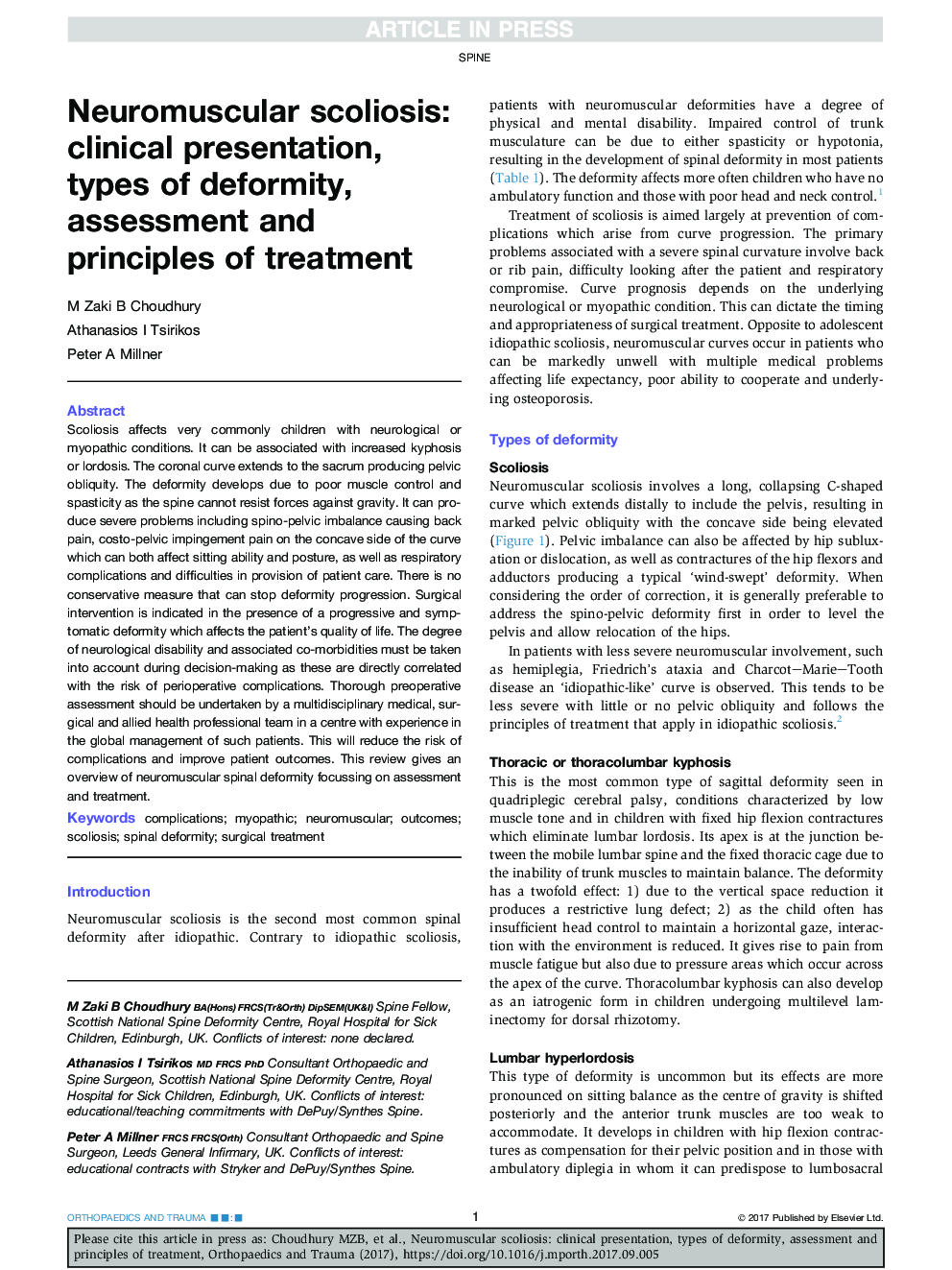| Article ID | Journal | Published Year | Pages | File Type |
|---|---|---|---|---|
| 8801989 | Orthopaedics and Trauma | 2017 | 7 Pages |
Abstract
Scoliosis affects very commonly children with neurological or myopathic conditions. It can be associated with increased kyphosis or lordosis. The coronal curve extends to the sacrum producing pelvic obliquity. The deformity develops due to poor muscle control and spasticity as the spine cannot resist forces against gravity. It can produce severe problems including spino-pelvic imbalance causing back pain, costo-pelvic impingement pain on the concave side of the curve which can both affect sitting ability and posture, as well as respiratory complications and difficulties in provision of patient care. There is no conservative measure that can stop deformity progression. Surgical intervention is indicated in the presence of a progressive and symptomatic deformity which affects the patient's quality of life. The degree of neurological disability and associated co-morbidities must be taken into account during decision-making as these are directly correlated with the risk of perioperative complications. Thorough preoperative assessment should be undertaken by a multidisciplinary medical, surgical and allied health professional team in a centre with experience in the global management of such patients. This will reduce the risk of complications and improve patient outcomes. This review gives an overview of neuromuscular spinal deformity focussing on assessment and treatment.
Related Topics
Health Sciences
Medicine and Dentistry
Orthopedics, Sports Medicine and Rehabilitation
Authors
M.Zaki B. Choudhury, Athanasios I. Tsirikos, Peter A. Millner,
